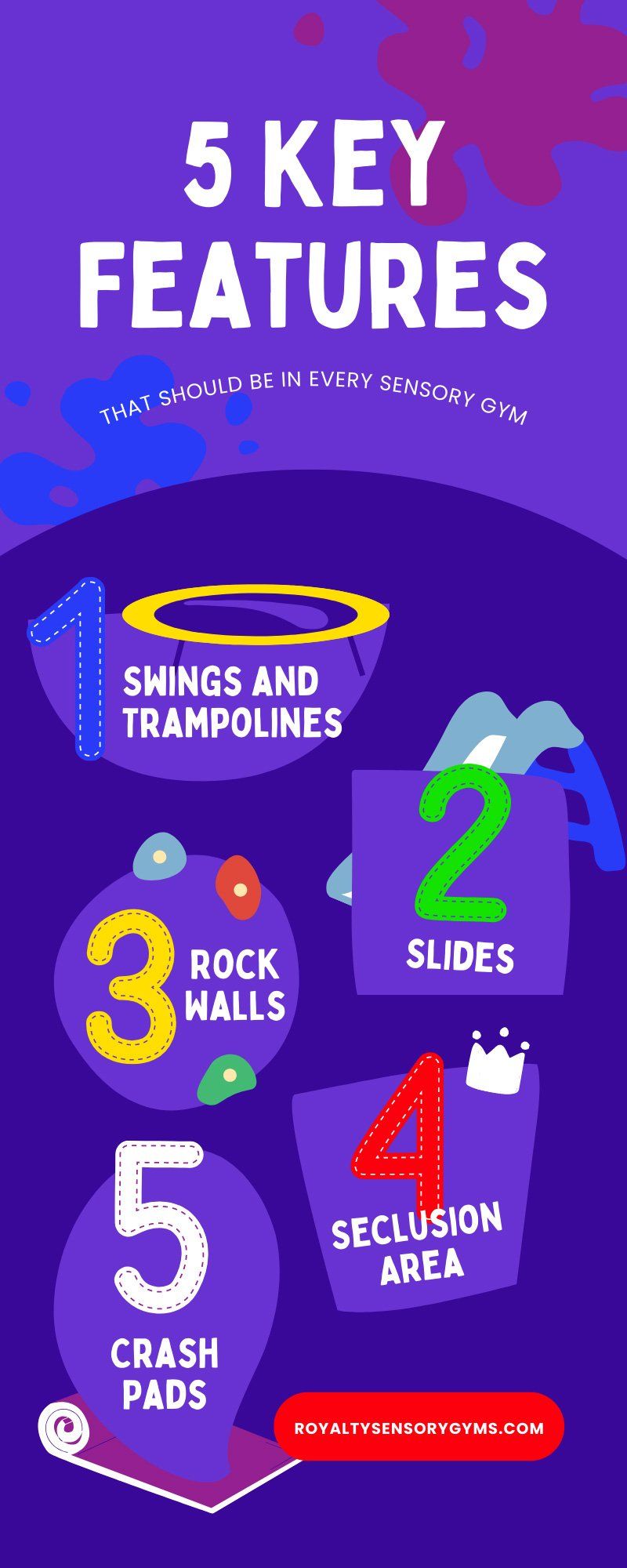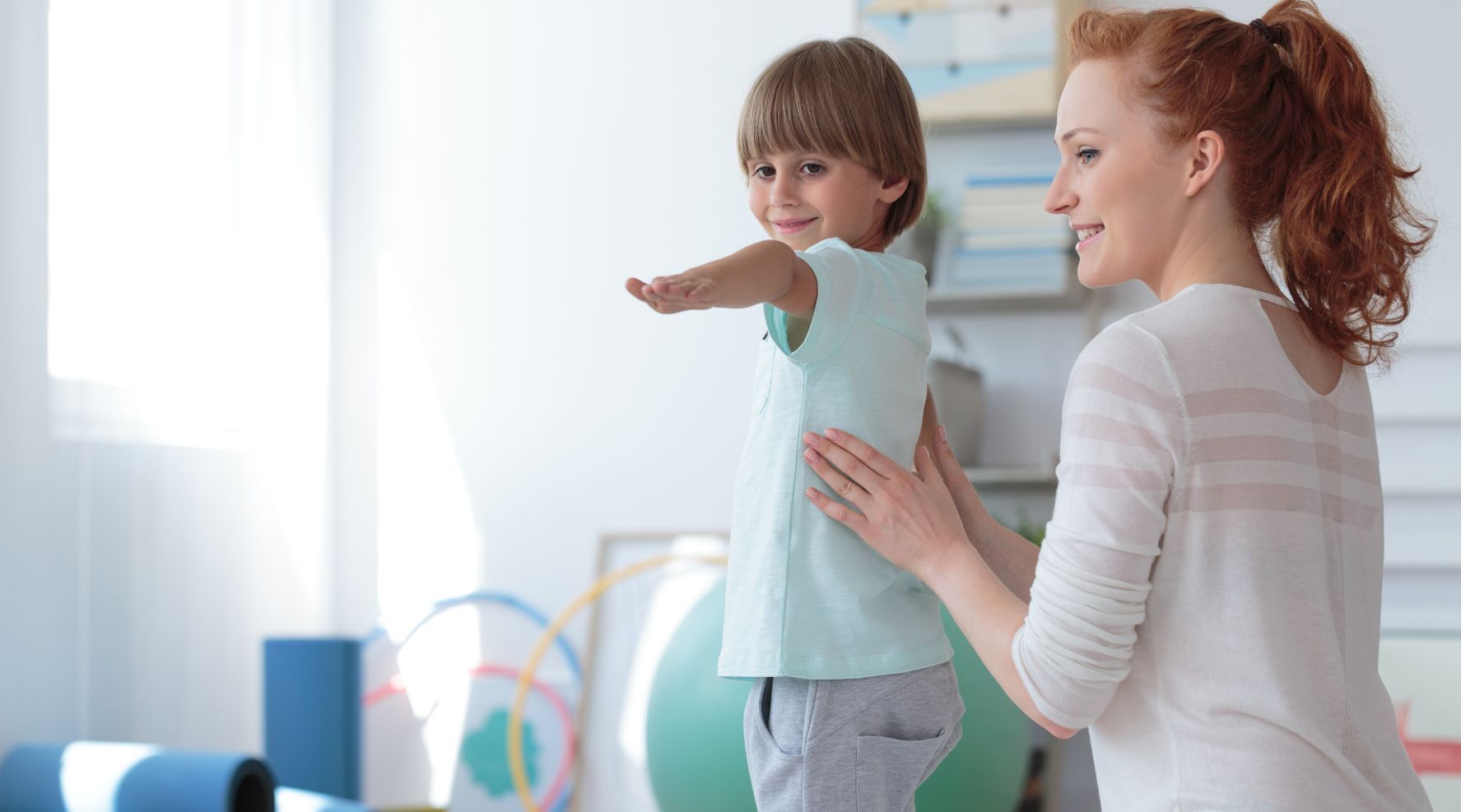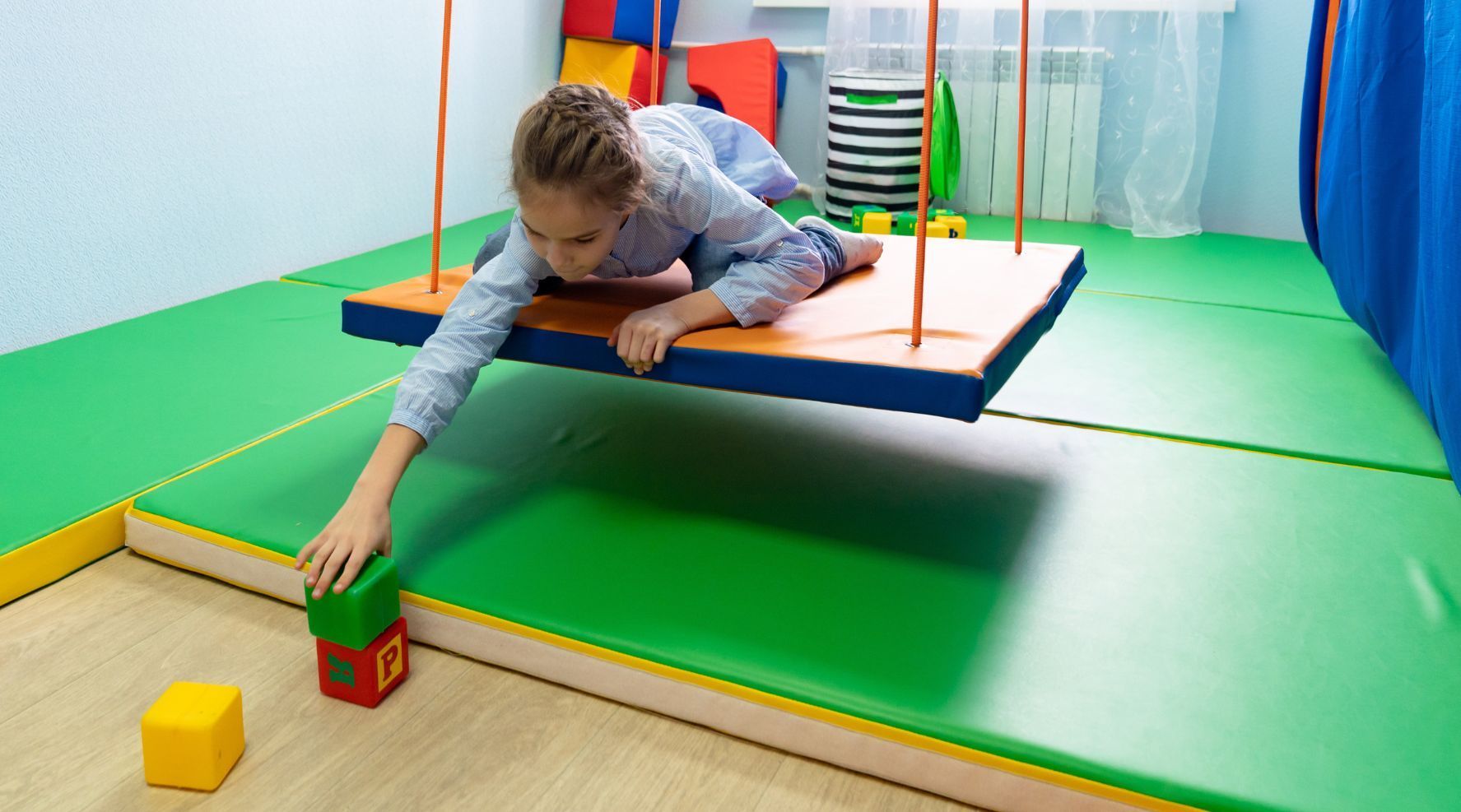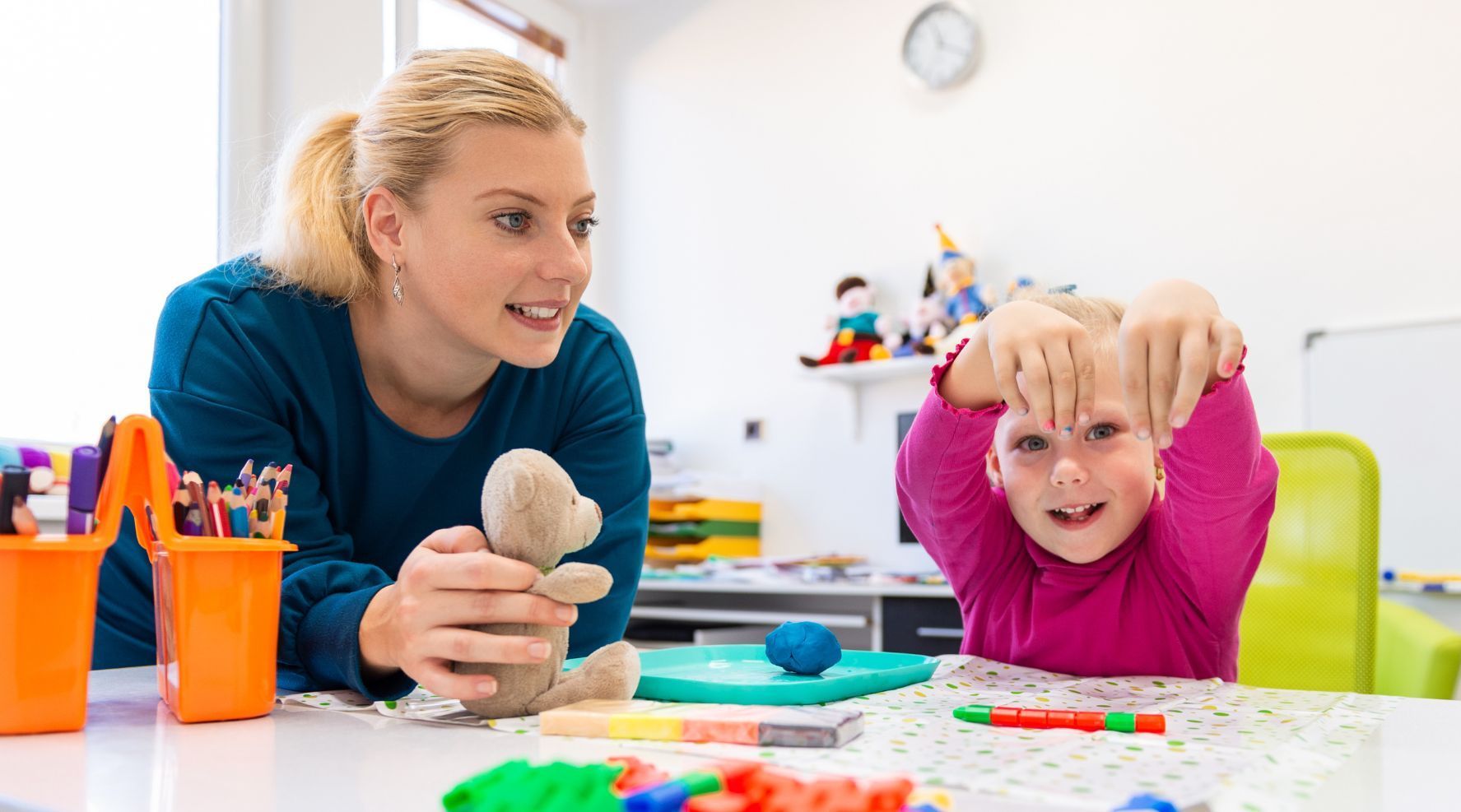5 Key Features That Should Be in Every Sensory Gym
Children on the autism spectrum and those with separate sensory processing issues benefit from play and therapy in specially designed environments called sensory rooms or sensory gyms. These occupational therapy sensory gyms contain play equipment that helps kids develop balance, fine motor skills, a better sense of physical control over their bodies, and a tolerance for different textures.
They also provide areas for retreat so that a child on the verge of a meltdown can take a break and learn strategies for soothing themselves. Kids who find sensory stimulation overwhelming may engage in sensory avoidance. They may separate themselves from groups of people, noise, or bright lights, and they should have a place to go when they need a calmer environment.
By contrast, some kids display “sensory-seeking” behavior. They crash into things, hug other kids way too hard, or need to jump and bounce too much in classrooms that require extended periods of sitting still. They may engage in dangerous behaviors like jumping from heights, breaking things, or self-harm like slapping, pinching, or banging their heads. These kids need safe alternatives to get the sensory stimulation they seek. Sensory gym environments can provide that kind of stimulation.
Where To Find Sensory Gyms
The most likely place to find a sensory gym is at an occupational therapy practice. Certified occupational therapists use sensory integration therapy equipment in gym-like settings, with swings, slides, climbing walls, crash pads, and monkey bars to help kids gain more control over their bodies and their reactions to their environments.
Therapy is designed to develop children’s sensory systems. In addition to the five senses we all learn as children (sight, smell, taste, touch, and hearing), autistic kids and children with sensory processing issues need help with the vestibular and proprioceptive sensory systems.
The vestibular system regulates balance and helps humans understand where their bodies are in space relative to other objects around them. The vestibular sense keeps us from crashing into walls or bumping into obstacles in our paths while staying upright and not falling.
The proprioceptive system sends signals to the brain about where the different parts of our bodies are in relation to each other. Proprioception makes it possible to play the piano without looking at the keys or bust a move on the dance floor.
With the increasing number of children diagnosed as being on the autism spectrum and having sensory processing issues, you can now find sensory gym equipment in schools, hospitals, and homes. When you take your child to a sensory gym, look for these five key features that should be in every sensory gym to help develop sensory systems. You should look for the same if you are considering installing one in your home.
Swings and Trampolines
Swings are one of the most effective tools for helping kids with vestibular issues. In a well-equipped sensory gym, you may find several different types of swings, from hammock-style swings to swinging platforms suspended securely from the ceiling. Swinging challenges the vestibular system to retain awareness of where the body is in space. For many kids, on the spectrum or not, the sensation of swinging is simply fun, pleasurable, and calming.
Mini trampolines with safety bars to hold give kids a chance to bounce and jump, building strength, coordination, and body awareness. Many sensory-seeking kids just need the movement to calm themselves. Jumping provides the sensory stimulation they seek.
Slides
Slides build gross motor skills and planning ability. You must know when to put your feet down to stop yourself at the bottom.
A child who has practiced on the slide in a sensory gym may be better prepared to approach a slide at a public park, which can require social skills. The urge to get on the slide may be confronted with the requirement of standing in line and learning to negotiate with other kids.
Rock Walls
Kids can traverse climbing walls horizontally or vertically. Climbing the wall requires motor planning: where do I put my foot next? How can I use my hands and arm strength to hang on as I move from one foothold to the next? Moving up or across a climbing wall forces a child to use both sides of their body, working together to complete the task of moving from one point to the next on the wall.
Seclusion Area
Kids on the spectrum need a quiet space to take a break and get away from excess sensory stimulation. A key feature of every sensory gym is a seclusion area where kids who’ve had enough for a while can calm themselves and regroup.
A seclusion area should have comfortable cushions or beanbag chairs to relax on, soft lighting in gentle colors like blues and dark pinks, and gentle, ambient sounds like recordings of rain or “brain wave” sleep music.
Many kids find solace in bubble tubes or walls, lava lamps, or moving sand pictures or hourglasses they can invert and watch as the sand shifts or falls.
Crash Pads
Unfortunately, many sensory-seeking kids are labeled as disruptive. They are regarded as having behavioral problems instead of being recognized as needing extra sensory stimulation. Crash pads give these kids a safe way to land when they have the urge to crash into something. They build body awareness as kids begin to realize it isn’t necessary to fling themselves full force into objects (or people) to get the physical sensation they need to be confident of where their body is in space.
Crash pads are also just fun and give children a safe way to burn off excess energy. Kids will learn to recognize that it isn’t safe to crash into something that isn’t padded, while it’s OK to land on a big, thick cushion that provides protection from injury.
Other Types of Sensory Gym Equipment
While all sensory gyms should have equipment that helps develop the vestibular and proprioceptive systems, that equipment can come in many different forms. You may find monkey bars, ball pits, and zip lines in an occupational therapy sensory gym. You may find light shields that soften the bright, harsh glow of overhead lighting or soundproofing that muffles intrusions from traffic noise.
Sensory gyms may include supplies and equipment intended to stimulate or acclimate a child’s reactions to sounds, lights, tastes, and textures. Crunchy or creamy snacks, music and musical instruments, sand tables, or light toys can also help kids manage their reactions to sensory stimuli.
Occupational therapists are your best source of recommendations that specifically address your child’s unique needs. You can support their work at home by incorporating some features of the professional sensory gym into a sensory space in a corner, a spare room, or the basement of your house.
While children don’t “grow out” of autism, they can learn how to cope with a world that is insensitive or oblivious to their needs. Sensory gyms with the proper equipment can help.
Royalty Sensory Gyms is your home for a variety of occupational therapy sensory gym equipment. Let us build you the perfect space where your patient or child can get the safe play space they deserve. Contact us today for a free consultation and to speak with one of our expert staff members.






